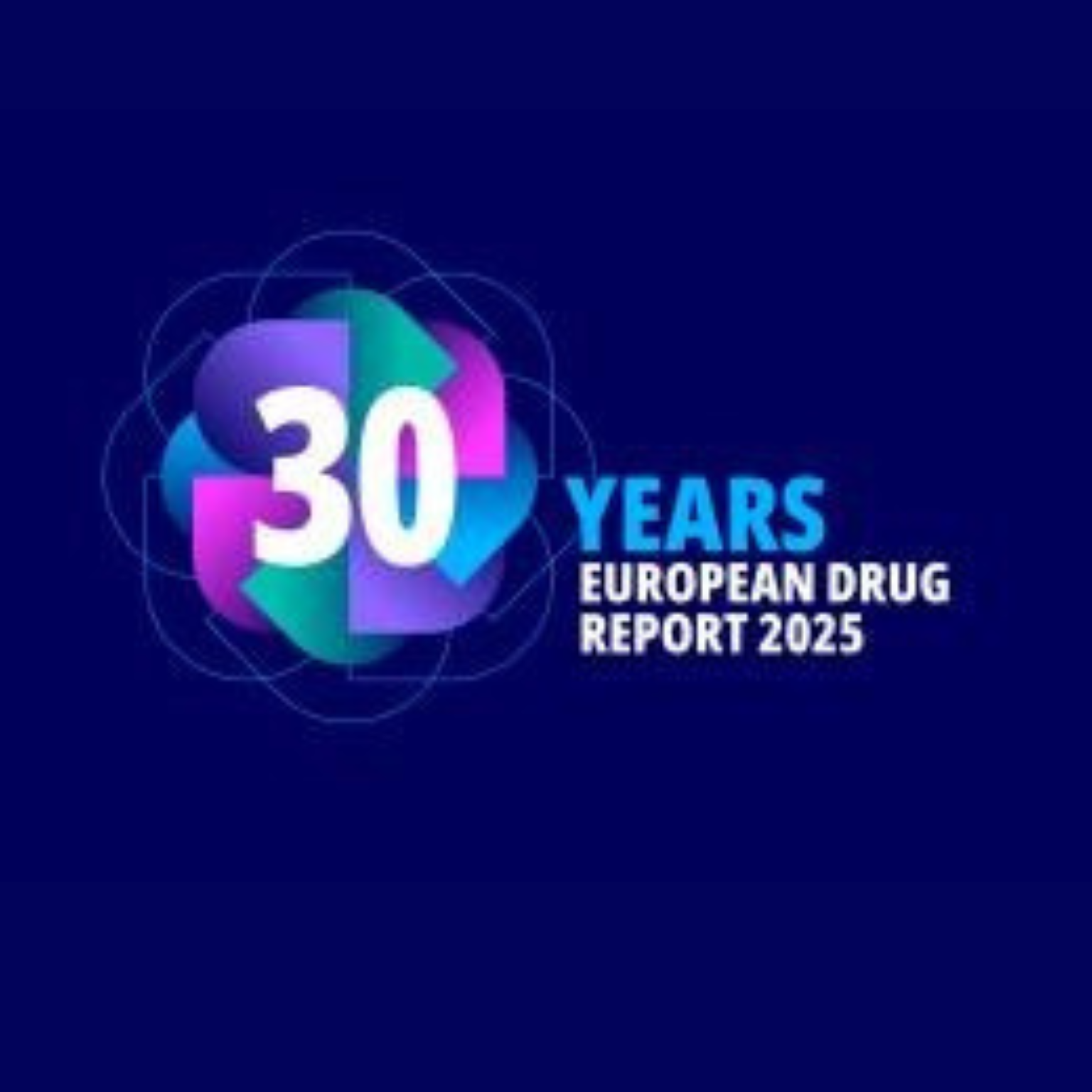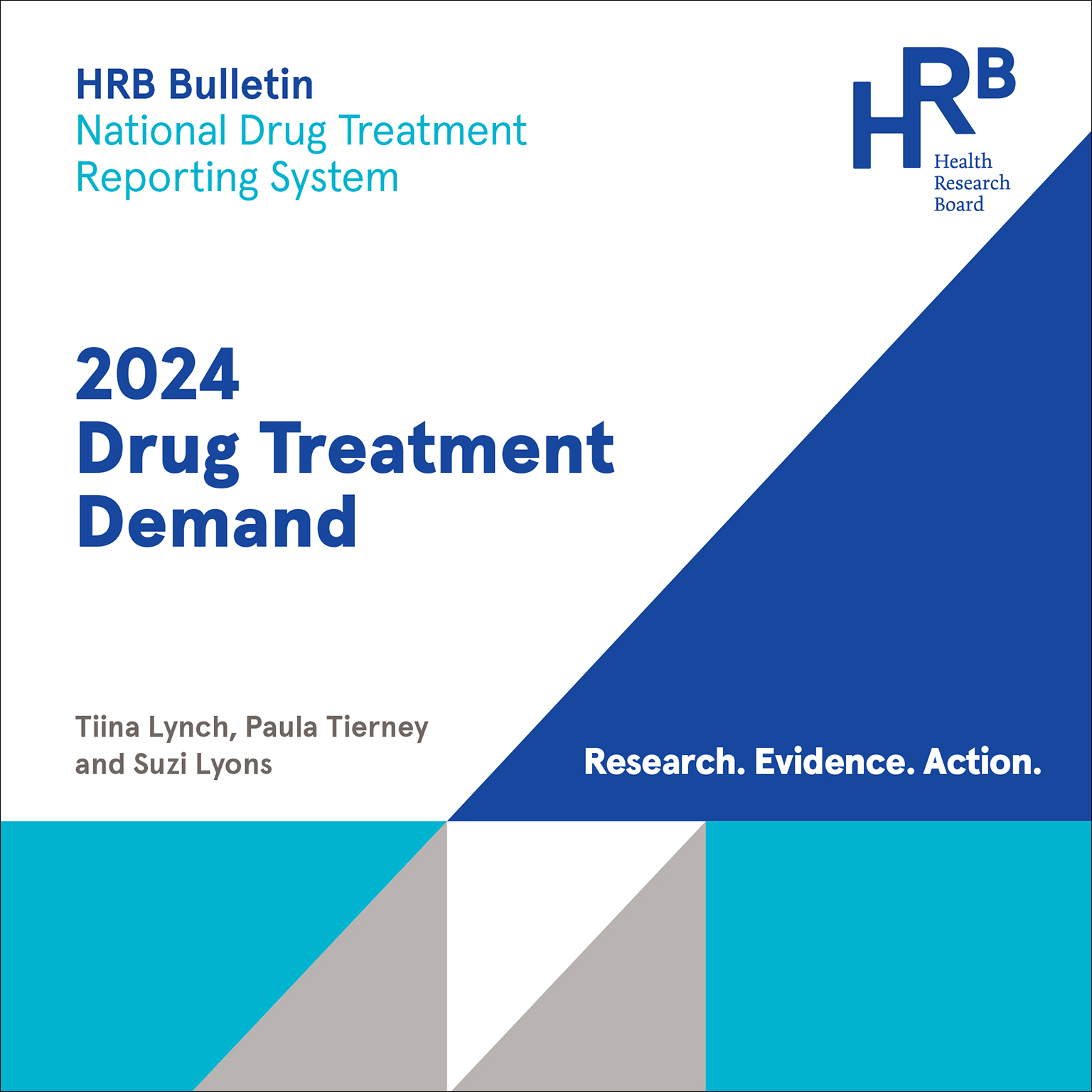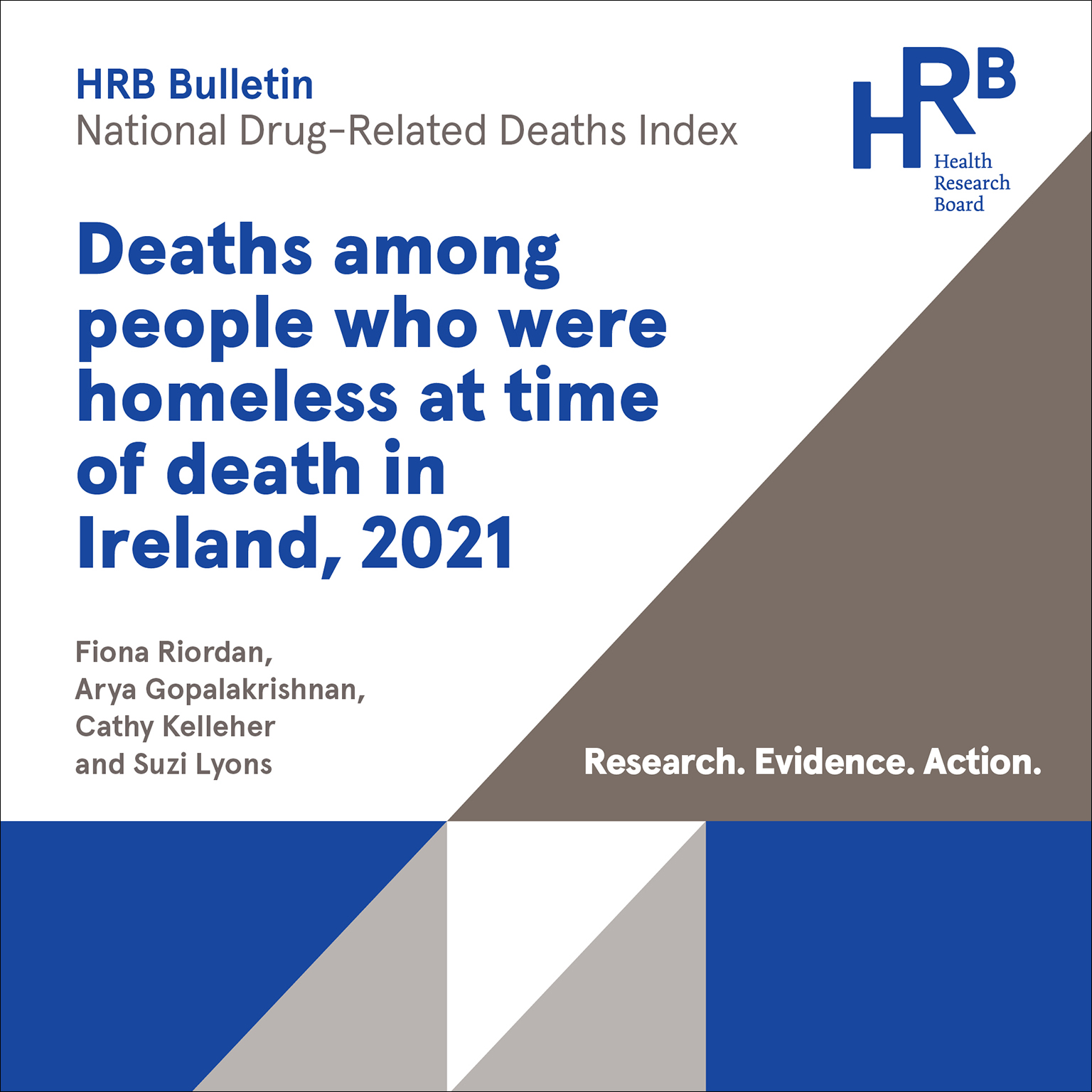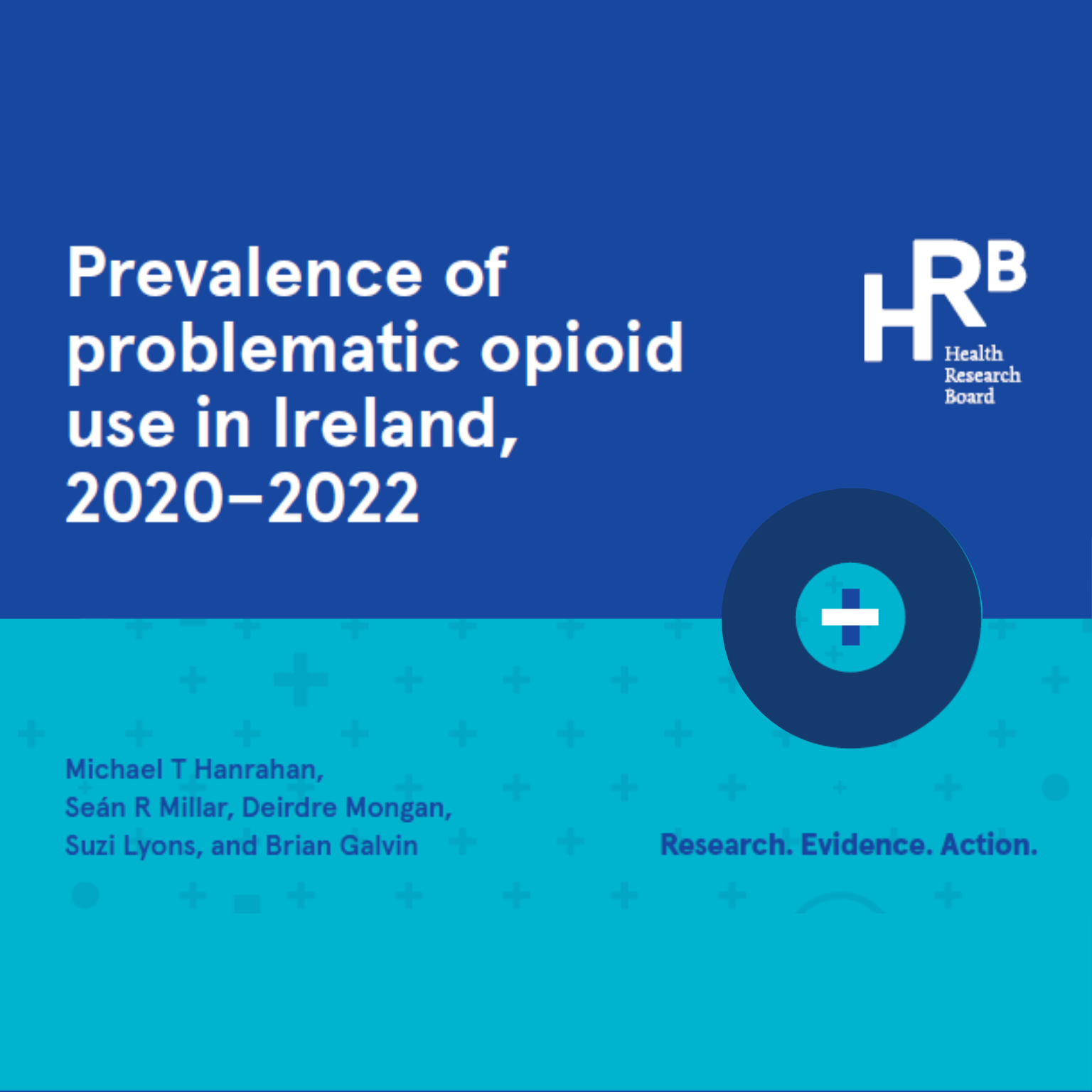HRB publishes latest drug treatment figures for Ireland 2010 – 2016
Numbers treated for cocaine use rises for third year in a row. Opiates are still the main problem drug reported. Benzodiazepines increase both as the main and as an additional problem drug.
5 min read - 29 May 2018
Latest drug treatment figures from the Health Research Board (HRB) show that a total of 63,187 cases were treated for problem drug use (excluding alcohol) in Ireland between 2010 and 2016. Treated cases increased from 8,806 cases in 2010, to 9,227 in 2016*.
Commenting on some of the trends in the paper, Dr Suzi Lyons, Senior Researcher at the HRB said;
‘There are changes in the types of drugs reported. Opiates remain the main problem drug over the period, but they have decreased as a proportion of all cases treated, from 58% in 2010 to 47% in 2016. Meanwhile the proportion of all cases that report cocaine, cannabis and benzodiazepines have increased’.
‘Since 2014 there has been a steady increase in the proportion of cases reporting cocaine as a main problem drug, rising from 8% (708 cases) of all cases in 2013 to 12% (1,138 cases) of all cases in 2016. This rise is seen in both new and previously treated cases. There has been an increase in the proportion of cases who were female, from 14% in 2010 to 23% in 2016’.
‘There has also been an increase in the number of cases reporting benzodiazepines. These rose from 4% (365 cases) in 2010, to 10% (897) in 2016 of all cases treated. In 2016, benzodiazepines were the most common additional drug, with one third of polydrug users (37%, 2,105 cases) reporting problem use’.
‘The figures show a decrease in the proportion of new cases, or people presenting for treatment for the first time. However there has been an increase in the proportion of previously treated cases, or people returning for treatment, indicating the chronic, relapsing nature of addiction’.
Key findings
Main problem drug
- Opiates (mainly heroin) are the most commonly reported drug. However the proportion of cases treated has decreased from 58% (5,115 cases) in 2010, to 47% (4,341 cases) in 2016.
- Cannabis is the second most common drug among those treated, increasing from 23% (2,025 cases) in 2010 to 26% (2,439) of all cases in 2016.
- Cannabis is the most common drug reported by new cases, while opiates are the most common drug reported by previously treated cases.
- Cocaine remains third most common drug reported. In 2016, 12% (1,138) of cases reported problem cocaine use, the highest proportion reported since 2010 when they represented 10% (869) of all treated cases.
- The proportion of cases reporting benzodiazepines as a main problem drug more than doubled from 4% (365) in 2010, to 10% (897) of all cases in 2016.
- The proportion of cases treated for Z-drugs (a type of non-benzodiazepine sedative) has increased from 0.1% (13 cases) in 2010, to just over 1% (103 cases) in 2016.
- Reported problem use of novel psychoactive substances (NPS) peaked in 2010, at 2.5% (221 cases) then dropped to 0.4% (34) of all cases treated in 2012. Since then it has increased slightly to 0.8% (72 cases) of all cases treated in 2016.
Focus on cocaine
- Cocaine the third most common drug reported by cases presenting for treatment.
- The proportion reporting cocaine as a main problem drug increased from a low of 8% (708 cases) in 2013 to 12% (1138 cases) in 2016.
- The proportion of cocaine users who reported taking additional drugs decreased from 83% in 2010 to 70% in 2016. In 2016 the most common additional drug was alcohol, followed by cannabis and benzodiazepines.
- The proportion of females reporting cocaine as their main problem drug rose from 14% in 2010 to 23% in 2016.
- The proportion of cases reporting crack cocaine increased from 9% of cases in 2010 to 11% in 2016.
- Employment among those presenting for treatment for cocaine use increased from 15% in 2010 to 28% in 2016.
Polydrug use (problem use of more than one drug)
- Almost two thirds of cases (63%) reported problem polydrug use over the period.
- The proportion of cases reporting polydrug use has decreased slightly from 67% (5,781 cases) in 2010 to 62% (5,703 cases) in 2016.
- Up to 2013, alcohol was the most common additional drug reported. Since 2014 benzodiazepines have become the most common additional drugs reported.
Socio-demographics
- Median age of cases has increased from 28 years in 2010, to 30 years in 2016.
- The majority of cases, seven in every 10, were male.
- The proportion of cases who were homeless increased from 5% (453) in 2010 to 10% (886) in 2016.
- The proportion of cases treated who identified as Travellers increased from 2.8% (245) in 2010, to 3.2% (296) in 2016. The proportion of Travellers in the general population is 0.7% (2016 Census).
- A very high proportion of cases were unemployed. The proportion of cases unemployed increased from 63% (5,547) in 2010 to 66% (6,107) in 2016.
Injecting behaviour
- The proportion of all cases treated who reported ever injecting remained relatively stable over the reporting period at around one-third of all cases.
- The proportion of cases new to treatment reporting ever injecting has decreased slightly from 15% (570) in 2010 to 14% (476) in 2016.
*The HRB National Drug Treatment Reporting System changed to online reporting during the collection of 2016 figures. This change may have resulted in a reduction in the number of cases reported. However the overall trends (proportions) remain consistent with those reported in 2010 to 2015.
A copy of the HRB Bulletin Drug Treatment in Ireland 2010 – 2016 is available on the publications page of our website www.hrb.ie
Notes to editors
This paper describes trends in treated problem drug use in Ireland over the seven-year period 2010 to 2016, as recorded by the National Drug Treatment Reporting System (NDTRS). This information will assist policy makers, service planners and public health practitioners to develop appropriate responses to problem drug use in the future.
It is important to note that each record in the NDTRS database relates to a treatment episode (a case), and not to a person. This means that the same person could be counted more than once in the same calendar year if they had more than one treatment episode in that year.
ENDS
For more information, infographics or interviews please contact:-
Gillian Markey, Communications Manager, Health Research Board
M +353 87 2288514; E gmarkey@hrb.ie
5 min read - 29 May 2018



